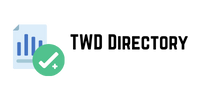Hackers often create hidden administrator accounts to maintain access to your website. These accounts may have innocent-looking usernames or be disguised as system accounts.
We’ve seen cases where hackers have check-for-suspicious created a single, cleverly disguised administrator user account.
We’ve also seen cases where malware has created dozens of administrator accounts.
Simply follow these steps to identify and remove suspicious users.
Go to the Users » All Users page in your WordPress admin panel.
Here, you need to look for accounts that you don’t recognize. These could be accounts with random
numbers, strange usernames, or accounts that pretend to be system accounts.
Next, it’s time to immediately remove any suspicious accounts by clicking “Delete” on the account in
question.
Warning : Some hackers name their accounts after common WordPress roles, such as
“admin_support” or “wp_maintenance”. Be extra vigilant with system-sounding usernames.
After analyzing and deleting suspicious user accounts, you can move on to the next step.
Step 3: Replace the hacked WordPress files check-for-suspicious
Just like replacing a virus-infected crypto database hard drive with a clean one, we need to restore
clean versions of the core WordPress files.
After replacing the main folders, you need to replace all the main files in the root directory. This
includes files like wp-activate.php, wp-blog-header.php, wp-comments-post.php, wp-config-
sample.phpand others.
When prompted, select “Overwrite” to replace the old files with the new version.
Next, you need to download the file wp-config.phpto your computer as a backup and delete the
one arquivo .htaccessfrom your root folder. Don’t worry, WordPress will automatically regenerate
the file .htaccessfor you.
Now, you need to rename the file wp-config-sample.phpto wp-config.php.txt and then right-click
on it to “Edit”. The file will open in a text editor like Notepad or TextEdit.
Carefully fill in the values for the 5 small tips to help your tourism marketing campaign be effective
database connection. You can refer to the old file wp-config.phpyou downloaded in the previous step
to find out the WordPress database, table prefix, username, password, and hostname.
For more details, see our guide on how to edit thewp-config.php .
Once you’re done replacing the old core files with fresh copies, be sure to visit your website and admin
panel to verify that everything is working as expected.
After that, you can move on to the next step.
Step 4: Remove malicious code from theme and plugin files check-for-suspicious
One of the common sources of burkina faso business directory malware is nulled plugins and themes .
These are pirated copies of premium WordPress plugins and themes downloaded from unauthorized
sources.
Hackers love to hide malicious code in theme and plugin files. They often inject their spammy
links and redirects into legitimate files, making them harder to detect. But don’t worry – we’ll show
you exactly what to look for.
Warning: Most WordPress theme and plugin settings are stored in the database and will remain
there even if you delete these files. However, sometimes you may lose custom settings or changes you
made to these files. In this case, you will need to manually restore these changes.
Once you have downloaded all the plugins and theme files, connect to your website using an FTP
client and navigate to the wp-content.
Now, you need to delete the \ de temasand \ folders pluginsfrom your website. Once they are
deleted, create new directories and name them “themes” and “plugins”. You will now have empty \ de
temasand \ folders plug-inson your website.
Now you can start uploading the theme and plugin files you downloaded earlier. You’ll need to unzip
each downloaded file before uploading them to your site.
Once you’ve uploaded all of your files, go to your WordPress admin area in your browser and activate
the theme and plugins you were using before. If you get an error, you may need to try uploading the specific theme or plugin file again.
Replacing theme and plugin files with newer versions downloaded from authentic sources will clean
them up.
Hopefully, by now, your website is free from any spam redirects. However, to ensure that your website
remains safe, you’ll need to beef up its security.

